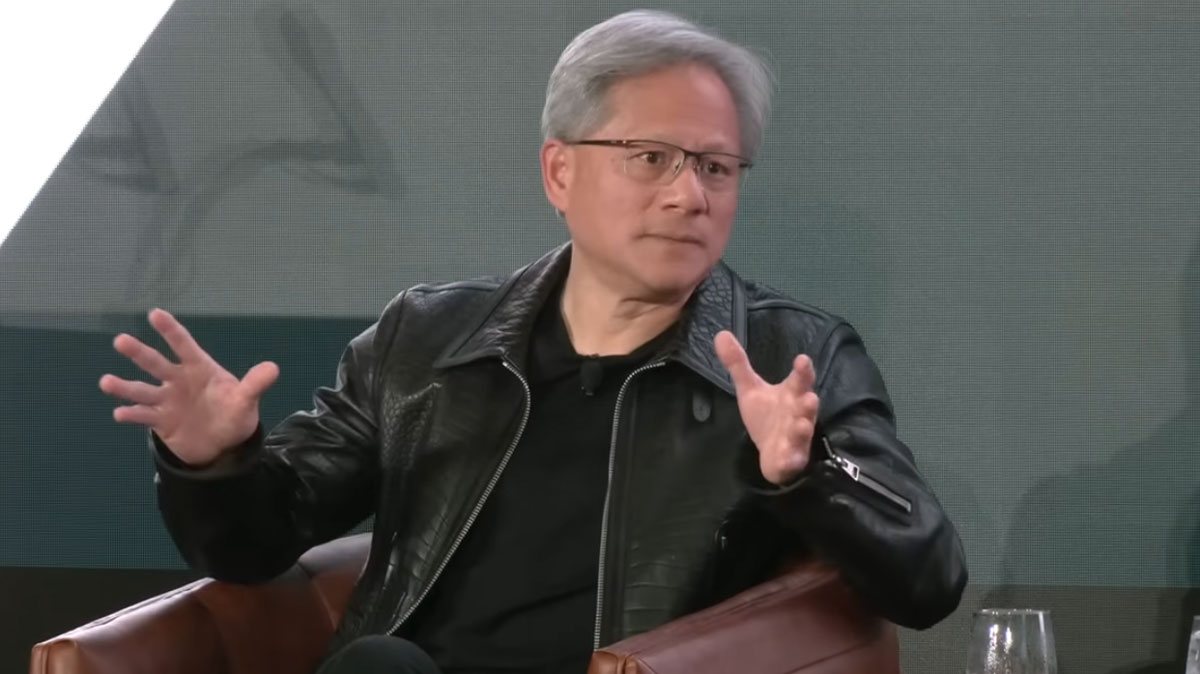Nvidia CEOJensen Huangrecently took to the stage to claim thatNvidia’s GPUsare “so good that even when the competitor’s chips are free, it’s not cheap enough.” Huang further explained that Nvidia GPU pricing isn’t really significant in terms of an AI data center’s total cost of ownership (TCO). The impressive scale of Nvidia’s achievements in powering thebooming AI industryis hard to deny; the company recently became the world’sthird most valuablecompany thanks largely to its AI-accelerating GPUs, but Jensen’s comments are sure to be controversial as he dismisses a whole constellation of competitors, such as AMD, Intel and a range of competitors with ASICs and other types of custom AI silicon.
Starting at22:32 of the YouTube recording, John Shoven, Former Trione Director of SIEPR and the Charles R. Schwab Professor Emeritus of Economics, Stanford University, asks, “You make completely state-of-the-art chips. Is it possible that you’ll face competition that claims to be good enough – not as good as Nvidia – but good enough and much cheaper? Is that a threat?”

Jensen Huang begins his response by unpacking his tiny violin. “We have more competition than anyone on the planet,” claimed the CEO. He told Shoven that even Nvidia’s customers are its competitors, in some cases. Also, Huang pointed out that Nvidia actively helps customers who are designing alternative AI processors and goes as far as revealing to them what upcoming Nvidia chips are on theroadmap.This does indeed sound like quite an extraordinary way of doing business, but Huang’s next claim that Nvidia operates as a “completely open book” while working with almost everyone else in the industry may be harder to believe. Remember, there were strong accusations of Nvidiaoperating a GPU Carteljust recently, with customers reportedly scared to speak to rival GPU / AI accelerator makers for fear of delayed orders. Anindustry consortium has also formedin an attempt to unseat the company’s dominant CUDA programming model.
Returning to the Stanford interview, Jensen Huang outlined Nvidia’s currently unassailable unique selling points. The Nvidia CEO said that whereas you could build a chip to be good at one particular algorithm, Nvidia’s GPUs are programmable. Moreover, the Nvidia platform is “a great standard… in every single cloud computer company.” A typical data center that wants to support a wide range of customers, from financial services to manufacturing and so on, will therefore be drawn towards Nvidia hardware.

Free isn’t cheap enough to compete with Nvidia
Huang also sought to provide a contrast that might be counterintuitive to those focused onGPU prices: people who buy and sell chips think about the price of chips, and people who operate data centers think about the cost of operations, he clarified.
Of course, companies will be well aware of the Total Cost of Ownership (TCO), which basically means that Nvidia’s claimed benefits like time to deployment, performance, utilization, and flexibility are “so good that even when the competitor’s chips are free, it’s not cheap enough,” according to Huang.

Concluding his answer to Shoven, the Nvidia CEO underlined that keeping this far ahead, with this unbeatable TCO, is Nvidia’s goal. Huang reminded summit attendees that what Nvidia does takes a lot ofhard workand innovation —no luck involved here— and nothing is taken for granted.
Get Tom’s Hardware’s best news and in-depth reviews, straight to your inbox.
Naturally, Nvidia’s competitors would beg to differ with Huang’s statements, but the incumbent is the unquestioned 800lb gorilla of the AI world right now, placing the onus on its competitors to prove Jensen’s statements wrong.
Mark Tyson is a news editor at Tom’s Hardware. He enjoys covering the full breadth of PC tech; from business and semiconductor design to products approaching the edge of reason.